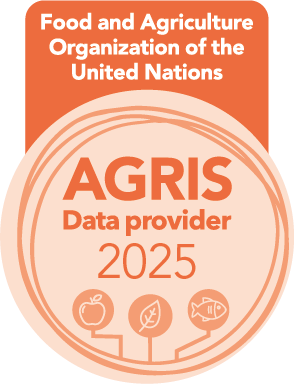Juicy Gems of Nutrition: Exploring the Nutrient Profile and Antioxidant Activity of Rosaceae Fruits
Nutrient Profile and Antioxidant Activity of Rosaceae Fruits
DOI:
https://doi.org/10.54393/df.v4i03.82Keywords:
Rosaceae Family, Rosaceae Fruits, Phenolics, Antioxidants, Organic Acid, NutraceuticalsAbstract
Fruit consumption provides valuable phenolic antioxidants and nutrients that are essential to subsidize consumers' health. The functional food value of many fruits belonging to the Rosaceae family is considerably high which is derived from their medicinal and nutritional attributes. This value contributes to the overall health and dietary practice of the consumer. Apples, pears, loquats, peaches, plums and apricots are some of the most desirable and economically viable members of this family. The present review aims a detailed evaluation of the nutritional composition, organic acid, sugar contents, and phenolic antioxidants of these beneficial fruits. Sucrose occurs in plum, loquat, peach and apricot fruits predominantly, in contrast, fructose was mainly present in apples and pears. The primary organic acids were citric, tartaric and malic acid in the tested fruits. The FRAP, TEAC and ORAC values were strongly correlated and almost similar to the total phenols (TP) in the extract of the tested samples. The phenolic acid assessment indicated that p-coumaric acid is the major compound in plums, apricot; gallic acid in loquat and caffeic acid in apple, peach and pear fruits. Overall, the results indicate that these Pakistani fruits contain significant levels of phenolic antioxidants and nutritionally valuable compounds, so they can be considered advantageous ingredients for the nutraceutical and food industry.
References
Sosalagere C, Adesegun Kehinde B, Sharma P. Isolation and functionalities of bioactive peptides from fruits and vegetables: A reviews. Food Chemistry. 2022 Jan; 366: 130494. doi: 10.1016/j.foodchem.2021.130494. DOI: https://doi.org/10.1016/j.foodchem.2021.130494
Cendrowski A, Kraśniewska K, Przybył JL, Zielińska A, Kalisz S. Antibacterial and Antioxidant Activity of Extracts from Rose Fruits (Rosa rugosa). Molecules. 2020 Mar; 25(6): 1365. doi: 10.3390/molecules25061365. DOI: https://doi.org/10.3390/molecules25061365
Pem D and Jeewon R. Fruit and Vegetable Intake: Benefits and Progress of Nutrition Education Interventions- Narrative Review Article. Iranian Journal of Public Health. 2015 Oct; 44(10): 1309–21.
Butkevičiūtė A, Urbštaitė R, Liaudanskas M, Obelevičius K, Janulis V. Phenolic Content and Antioxidant Activity in Fruit of the Genus Rosa L. Antioxidants. 2022 May; 11(5): 912. doi: 10.3390/antiox11050912. DOI: https://doi.org/10.3390/antiox11050912
Nayak PK, Basumatary B, Chandrasekar CM, Seth D, Kesavan RK. Impact of thermosensation and pasteurization on total phenolic contents, total flavonoid contents, antioxidant activity, and vitamin C levels of elephant apple (Dillenia indica) juice. Journal of Food Process Engineering. 2020 May; 43(8): e13447. doi: 10.1111/jfpe.13447. DOI: https://doi.org/10.1111/jfpe.13447
Demirci M, Ipek Y, Gul F, Ozen T, Demirtas I. Extraction, isolation of heat-resistance phenolic compounds, antioxidant properties, characterization and purification of 5-hydroxymaltol from Turkish apple pulps. Food Chemistry. 2018 Dec; 269: 111–7. doi: 10.1016/j.foodchem.2018.06.147. DOI: https://doi.org/10.1016/j.foodchem.2018.06.147
Koohestanian A, Tatari M, Samadi Kazemi M, Asgharzade A, Taghizadeh SF. Phytochemicals, Antioxidant Activity, and Biological Activities of Rosa persica Root. Erwerbs-Obstbau. 2023 Aug; 65(4): 1127-38. doi: 10.1007/s10341-022-00740-4. DOI: https://doi.org/10.1007/s10341-022-00740-4
Panche AN, Diwan AD, Chandra SR. Flavonoids: an overview. Journal of Nutritional Science. 2016 Dec; 5: e47. doi: 10.1017/jns.2016.41. DOI: https://doi.org/10.1017/jns.2016.41
Huang X, Wang H, Qu S, Luo W, Gao Z. Using artificial neural network in predicting the key fruit quality of loquat. Food Science & Nutrition. 2021 Jan; 9(3): 1780–91. doi: 10.1002/fsn3.2166. DOI: https://doi.org/10.1002/fsn3.2166
Liu Y, Zhang W, Xu C, Li X. Biological Activities of Extracts from Loquat (Eriobotrya japonica Lindl.): A Review. International Journal of Molecular Sciences. 2016 Dec; 17(12): 1983. doi: 10.3390/ijms17121983. DOI: https://doi.org/10.3390/ijms17121983
Manzoor M, Anwar F, Saari N, Ashraf M. Variations of Antioxidant Characteristics and Mineral Contents in Pulp and Peel of Different Apple (Malus domestica Borkh.) Cultivars from Pakistan. Molecules. 2012 Jan; 17(1): 390–407. doi: 10.3390/molecules17010390. DOI: https://doi.org/10.3390/molecules17010390
Tareen AK, Panezai MA, Sajjad A, Achakzai JK, Kakar AM, Khan NY. Comparative analysis of antioxidant activity, toxicity, and mineral composition of kernel and pomace of apricot (Prunus armeniaca L.) grown in Balochistan, Pakistan. Saudi Journal of Biological Sciences. 2021 May; 28(5): 2830–9. doi: 10.1016/j.sjbs.2021.02.015. DOI: https://doi.org/10.1016/j.sjbs.2021.02.015
Gómez-Martínez H, Bermejo A, Zuriaga E, Badenes ML. Polyphenol content in apricot fruits. Scientia Horticulturae. 2021 Feb; 277: 109828. doi: 10.1016/j.scienta.2020.109828. DOI: https://doi.org/10.1016/j.scienta.2020.109828
Manzoor M, Anwar F, Mahmood Z, Rashid U, Ashraf M. Variation in Minerals, Phenolics and Antioxidant Activity of Peel and Pulp of Different Varieties of Peach (Prunus persica L.) Fruit from Pakistan. Molecules. 2012 May; 17(6): 6491–506. doi: 10.3390/molecules17066491. DOI: https://doi.org/10.3390/molecules17066491
Jelena Tomić, Franci Stampar, Glišić I, Jerneja Jakopic. Phytochemical assessment of plum (Prunus domestica L.) cultivars selected in Serbia. Food Chemistry. 2019 Nov; 299: 125113–3. doi: 10.1016/j.foodchem.2019.125113. DOI: https://doi.org/10.1016/j.foodchem.2019.125113
Sahamishirazi S, Moehring J, Claupein W, Graeff-Hoenninger S. Quality assessment of 178 cultivars of plum regarding phenolic, anthocyanin and sugar content. Food Chemistry. 2017 Jan; 214: 694–701. doi: 10.1016/j.foodchem.2016.07.070. DOI: https://doi.org/10.1016/j.foodchem.2016.07.070
Commisso M, Bianconi M, Poletti S, Negri S, Munari F, Ceoldo S, et al. Metabolomic Profiling and Antioxidant Activity of Fruits Representing Diverse Apple and Pear Cultivars. Biology. 2021 Apr; 10(5): 380. doi: 10.3390/biology10050380. DOI: https://doi.org/10.3390/biology10050380
Ali B, Ziyyat Abderrahim, Mekhfi Hassane, Sindic Marianne, Fauconnier Marie-Laure, Legssyer Abdelkhaleq, et al. Chemical Composition of Cactus Pear Seed Oil: phenolics identification and antioxidant activity. Journal of Pharmacopuncture. 2022 Jun; 25(2): 121–9. doi: 10.3831/KPI.2022.25.2.121. DOI: https://doi.org/10.3831/KPI.2022.25.2.121
Mei X, Yang W, Huang G, Huang H. The antioxidant activities of balsam pear polysaccharide. International Journal of Biological Macromolecules. 2020 Jan; 142: 232–6. doi: 10.1016/j.ijbiomac.2019.09.168. DOI: https://doi.org/10.1016/j.ijbiomac.2019.09.168
Dong X, He Y, Yuan C, Cheng X, Li G, Shan Y, et al. Controlled Atmosphere Improves the Quality, Antioxidant Activity and Phenolic Content of Yellow Peach during the Shelf Life. Antioxidants. 2022 Nov; 11(11): 2278. doi: 10.3390/antiox11112278. DOI: https://doi.org/10.3390/antiox11112278
Guo Y, Yang Y, Qin Y, Guan T, Yang Q, Wang Y, et al. Nutritional qualities and antioxidant activity of Pleurotus floridanus grown on composted peach sawdust substrate with different composting time. Biotechnology and Applied Biochemistry. 2022 Apr; 70(1): 210-20. doi: 10.1002/bab.2344. DOI: https://doi.org/10.1002/bab.2344
Wu H, Xu Y, Wang H, Miao Y, Li C, Zhao R, et al. Physicochemical Characteristics, Antioxidant Activities, and Aroma Compound Analysis of Seven Peach Cultivars (Prunus persica L. Batsch) in Shihezi, Xinjiang. Foods. 2022 Sep 20; 11(19): 2944–4. doi: 10.3390/foods11192944. DOI: https://doi.org/10.3390/foods11192944
Ma WF, Li YB, Nai GJ, Liang GP, Ma ZH, Chen BH, et al. Changes and response mechanism of sugar and organic acids in fruits under water deficit stress. PeerJ. 2022 Aug; 10: e13691. doi: 10.7717/peerj.13691. DOI: https://doi.org/10.7717/peerj.13691
Zheng J, Huang C, Yang B, Kallio H, Liu P, Ou S. Regulation of phytochemicals in fruits and berries by environmental variation—Sugars and organic acids. Journal of Food Biochemistry. 2018 Aug; 43(6): e12642. doi: 10.1111/jfbc.12642. DOI: https://doi.org/10.1111/jfbc.12642
Walker RP, Battistelli A, Bonghi C, Drincovich MF, Falchi R, Lara MV, et al. Non-structural carbohydrate metabolism in the flesh of stone fruits of the genus Prunus (Rosaceae)–A review. Frontiers in Plant Science. 2020 Nov; 11: 549921. doi: 10.3389/fpls.2020.549921. DOI: https://doi.org/10.3389/fpls.2020.549921
Mizzi L, Chatzitzika C, Gatt R, Valdramidis V. HPLC analysis of phenolic compounds and flavonoids with overlapping peaks. Food Technology and Biotechnology. 2020 Apr; 58(1): 12-9. doi: 10.17113/ftb.58.01.20.6395. DOI: https://doi.org/10.17113/ftb.58.01.20.6395
Lee MJ, Lee YG, Lim YJ, Seo KH, Eom SH, Kang SC, et al. Phenolic Compounds from the Fruits of Prunus davidiana (Rosaceae) and Their Antioxidant Activities. Chemistry & Biodiversity. 2023 Jan; 20(1): e202200823. doi: 10.1002/cbdv.202200823. DOI: https://doi.org/10.1002/cbdv.202200823
Nayak B, Liu RH, Tang J. Effect of Processing on Phenolic Antioxidants of Fruits, Vegetables, and Grains—A Review. Critical Reviews in Food Science and Nutrition. 2015 Jan; 55(7): 887–918. doi: 10.1080/10408398.2011.654142. DOI: https://doi.org/10.1080/10408398.2011.654142
Ifie I and Marshall LJ. Food processing and its impact on phenolic constituents in food. Cogent Food & Agriculture. 2018 Jan; 4(1): 1507782. doi: 10.1080/23311932.2018.1507782. DOI: https://doi.org/10.1080/23311932.2018.1507782
Munteanu IG and Apetrei C. Analytical Methods Used in Determining Antioxidant Activity: A Review. International Journal of Molecular Sciences. 2021 Mar; 22(7): 3380. doi: 10.3390/ijms22073380. DOI: https://doi.org/10.3390/ijms22073380
Siddeeg A, AlKehayez NM, Abu-Hiamed HA, Al-Sanea EA, AL-Farga AM. Mode of action and determination of antioxidant activity in the dietary sources: An overview. Saudi Journal of Biological Sciences. 2021 Mar; 28(3): 1633–44. doi: 10.1016/j.sjbs.2020.11.064. DOI: https://doi.org/10.1016/j.sjbs.2020.11.064
Benabderrahmane W, Lores M, Benaissa O, Lamas JP, de Miguel T, Amrani A, et al. Polyphenolic content and bioactivities of Crataegus oxyacantha L. (Rosaceae). Natural Product Research. 2019 Mar; 35(4): 627–32. doi: 10.1080/14786419.2019.1582044. DOI: https://doi.org/10.1080/14786419.2019.1582044
Patel JM. A review of potential health benefits of flavonoids. Lethbridge Undergraduate Research Journal. 2008; 3(2): 1-5.
Bitis L, Sen A, Ozsoy N, Birteksoz-Tan S, Kultur S, Melikoglu G. Flavonoids and biological activities of various extracts from Rosa sempervirens leaves. Biotechnology & Biotechnological Equipment. 2017 Jan; 31(2): 299–303. doi: 10.1080/13102818.2016.1277956. DOI: https://doi.org/10.1080/13102818.2016.1277956
Jahromi SG. Extraction techniques of phenolic compounds from plants. In: Plant physiological aspects of phenolic compounds. 2019 Sep: 1-8.
Safdar MN, Kausar T, Nadeem M, Murtaza M, Sohail S, Mumtaz A, et al. Extraction of phenolic compounds from (Mangifera indica L.) and kinnow (Citrus reticulate L.) peels for the development of functional fruit bars. Food Science and Technology. 2021 Aug; 42: e09321. doi: 10.1590/fst.09321. DOI: https://doi.org/10.1590/fst.09321
Mahdavi‐Yekta M, Nouri L, Azizi MH. The effects of hydrolysis condition on antioxidant activity of protein hydrolyzate from quinoa. Food Science & Nutrition. 2019 Feb; 7(3): 930–6. doi: 10.1002/fsn3.871. DOI: https://doi.org/10.1002/fsn3.871
Hameed A, Liu Z, Wu H, Zhong B, Ciborowski M, Suleria HAR. A Comparative and Comprehensive Characterization of Polyphenols of Selected Fruits from the Rosaceae Family. Metabolites. 2022 Mar; 12(3): 271. doi: 10.3390/metabo12030271. DOI: https://doi.org/10.3390/metabo12030271
Lee MJ, Feng W, Yang L, Chen YK, Chi E, Liu A, et al. Methods for efficient analysis of tocopherols, tocotrienols and their metabolites in animal samples with HPLC-EC. Journal of Food and Drug Analysis. 2018 Jan; 26(1): 318–29. doi: 10.1016/j.jfda.2017.07.012. DOI: https://doi.org/10.1016/j.jfda.2017.07.012
Häkkinen SH, Kärenlampi SO, Mykkänen HM, Törrönen AR. Influence of Domestic Processing and Storage on Flavonol Contents in Berries. Journal of Agricultural and Food Chemistry. 2000 Jun; 48(7): 2960–5. doi: 10.1021/jf991274c. DOI: https://doi.org/10.1021/jf991274c
Schieber A, Stintzing FC, Carle R. By-products of plant food processing as a source of functional compounds — recent developments. Trends in Food Science & Technology. 2001 Nov; 12(11): 401–13. doi: 10.1016/S0924-2244(02)00012-2. DOI: https://doi.org/10.1016/S0924-2244(02)00012-2
Amakura Y, Okada M, Tsuji S, Tonogai Y. Determination of phenolic acids in fruit juices by isocratic column liquid chromatography. Journal of Chromatography A. 2000 Sep; 891(1): 183–8. doi: 10.1016/S0021-9673(00)00625-7. DOI: https://doi.org/10.1016/S0021-9673(00)00625-7
Mattila P and Kumpulainen J. Determination of Free and Total Phenolic Acids in Plant-Derived Foods by HPLC with Diode-Array Detection. Journal of Agricultural and Food Chemistry. 2002 May; 50(13): 3660–7. doi: 10.1021/jf020028p. DOI: https://doi.org/10.1021/jf020028p
Mattila P, Hellström J, Törrönen R. Phenolic Acids in Berries, Fruits, and Beverages. Journal of Agricultural and Food Chemistry. 2006 Sep; 54(19): 7193–9. doi: 10.1021/jf0615247. DOI: https://doi.org/10.1021/jf0615247
Tokuşoğlu Ö, Ünal MK, Yıldırım Z. HPLC-UV and GC-MS characterization of the flavonol aglycons quercetin, kaempferol, and myricetin in tomato pastes and other tomato-based products. Acta Chromatogr. 2003; 13(13): 196-207.
Jakopič J, Veberič R, Štampar F. Extraction of phenolic compounds from green walnut fruits in different solvents. Acta Agriculturae Slovenica. 2009 May; 93(1): 11-5. doi: 10.2478/v10014-009-0002-4. DOI: https://doi.org/10.14720/aas.2009.93.1.14890
Lin LZ, Harnly JM, Pastor-Corrales MS, Luthria DL. The polyphenolic profiles of common bean (Phaseolus vulgaris L.). Food Chemistry. 2008 Mar; 107(1): 399–410. doi: 10.1016/j.foodchem.2007.08.038. DOI: https://doi.org/10.1016/j.foodchem.2007.08.038
Downloads
Published
How to Cite
Issue
Section
License
Copyright (c) 2023 DIET FACTOR (Journal of Nutritional & Food Sciences)

This work is licensed under a Creative Commons Attribution 4.0 International License.
This is an open-access journal and all the published articles / items are distributed under the terms of the Creative Commons Attribution License, which permits unrestricted use, distribution, and reproduction in any medium, provided the original author and source are credited. For comments












